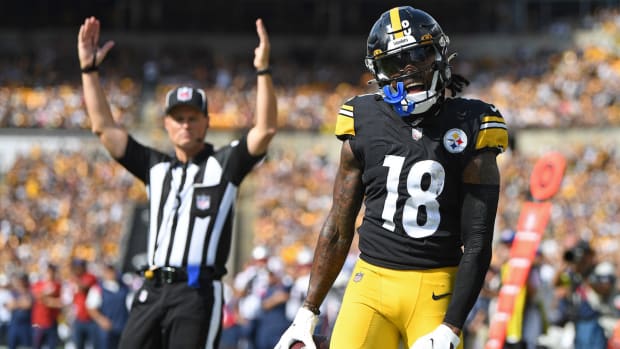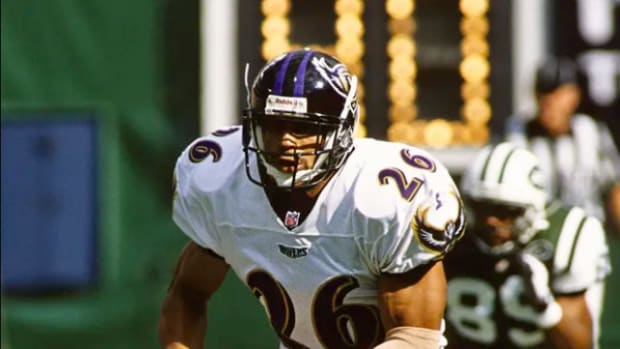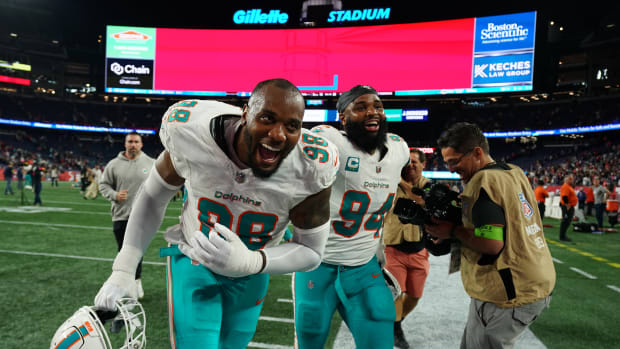Why Your Fantasy Football League Should Use Free Agent Acquisition Bidding
There's some luck involved in fantasy football. It's primarily skill, which is why some of the same people are perennially near the top of the standings. But the goal when creating leagues is to eliminate as much luck as possible.
One way to do that is the setup for acquiring free agents. First, there's the rolling waiver wire. In this system, the strategy depends on players deciding when to use the waiver wire priority, often waiting for that big free agent if they get to No. 1 in the waiver order because making a claim sends them back to the bottom. This involves luck and doesn't always create a fair shot for everyone to add players.
A lot of leagues use waiver wire priority when acquiring free agents. In this format, the team with the worst record after Week 1 gets the top free agent if they put in a claim. A good team gets penalized for having a good week and has to select from the bottom of the free-agent tier. Again, more luck often involved.
This isn't how the waiver wire should be determined. Everyone should get a chance to acquire every free agent. The best way to do this is to use Blind Bid Waivers, also known as FAAB.
What is FAAB?
FAAB stands for Free Agent Acquisition Budget. Each team gets a budget of imaginary dollars to use for the season. Each week, you bid on the free agents. It can vary from league-to-league on the budget. Most high-stakes leagues, such as the Fantasy Football World Championships (FFWC) use a $1,000 budget.
The minimum bid is $1, and once you run out of money, you can't bid on any more players. Some leagues do use $0 bids. Some leagues use smaller or larger budgets, but the amount isn't significant since every team starts with the same amount. By a specific deadline, usually Tuesday or Wednesday night, the highest bidding team for each free agent wins that player. If there is a tie on bids, the team lower in the standings or with fewer points wins the bid.
Players put in bids on players they want to add, and in addition, they will typically include a player they want to drop so they don't go over the roster limit. No one else sees the bids, so there is a lot of strategy involved every week. The highest bidder gets the player.
In the high-stakes formats, they usually have two FAAB periods, one on Wednesday and the other on Friday or Saturday. Home leagues might do it differently with one FAAB period and after that run, a first-come, first-serve process in which you can add a player at any time. The unfortunate part of this is whoever sees the breaking news first, gets to add the player and that's ultimately why many leagues opt for the FAAB system. Strategic-based gameplay should always be preferred over luck.
FAAB is more fair than waivers based on standings or waiver priority. For example, the big free agent after Week 1 last season was Broncos running back Phillip Lindsay. In some of the high-stakes leagues, he went for 40-50% of the budget. If you really want the player, go get him and be aggressive. If your waiver wire priority was 10th out of 12 teams, you weren't getting Lindsay.
With FAAB, everyone gets a shot to acquire any player. It's all up to the individual. It involves more strategy. A lot of skillful players will bid a high number on a free agent early in the season because if they hit, it means they contribute for the entire season. Lindsay is the prime example from last season.
Not only is FAAB the fairest way to acquire free agents, but there's also a lot of thinking to do. Do you spend a lot of money on a player? Do you save money for later in the season? Do you bid on a player with a minimal role and stash him for the weeks ahead? In the playoffs, do you block your opponent if you have more FAAB than them?
Strategy for FAAB
Budgeting the money in a FAAB format is essential. Many times your team’s start to the season can dictate the strategy. Early season injuries can cause an aggressive approach. A poor start and several bye week issues can call for several players to acquire. Even with a great start like 4-0 or 5-1, the waiver wire is critical. The savvy players will stash players a week or two ahead of time for cheap. Never ignore looking at the waiver wire each week. While there might not be a glaring need on a team, always look at what's available.
One of the keys in FAAB is watching the bids early in the season. Figure out if the league is aggressive in bids or conservative. There's no clear bid for certain players. Lindsay went for $413 in one high-stakes FFWC league last year, and in a similar format, he went for $289. If one team loses a stud player in that week, take a look at their roster and see if they need a running back desperately. It could mean that team will bid aggressively and provide some context of what a reasonable bid is.
After a few weeks and especially toward the end of the season, make sure you look at what the other players have left for a budget. It helps shape the bids. For example, it's Week 10, and there's a running back you need. You have $489 left and the next highest amount left is $234. A $235 bid means you get him and still have a good amount of money left in comparison to the rest of the league.
If you haven't tried FAAB, give it a try. I am certain it's a format you will enjoy and want to employ in all your leagues.
Easy. Fast. Fun! Enter the Mock Draft World Championship. Submit your free team, then watch it climb the standings all year long as you fight for the $2,500 prize or The Ultimate Fantasy Football Experience, a trip to Vegas to compete in the Main Event next year!




































